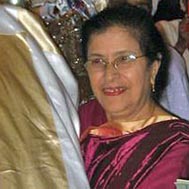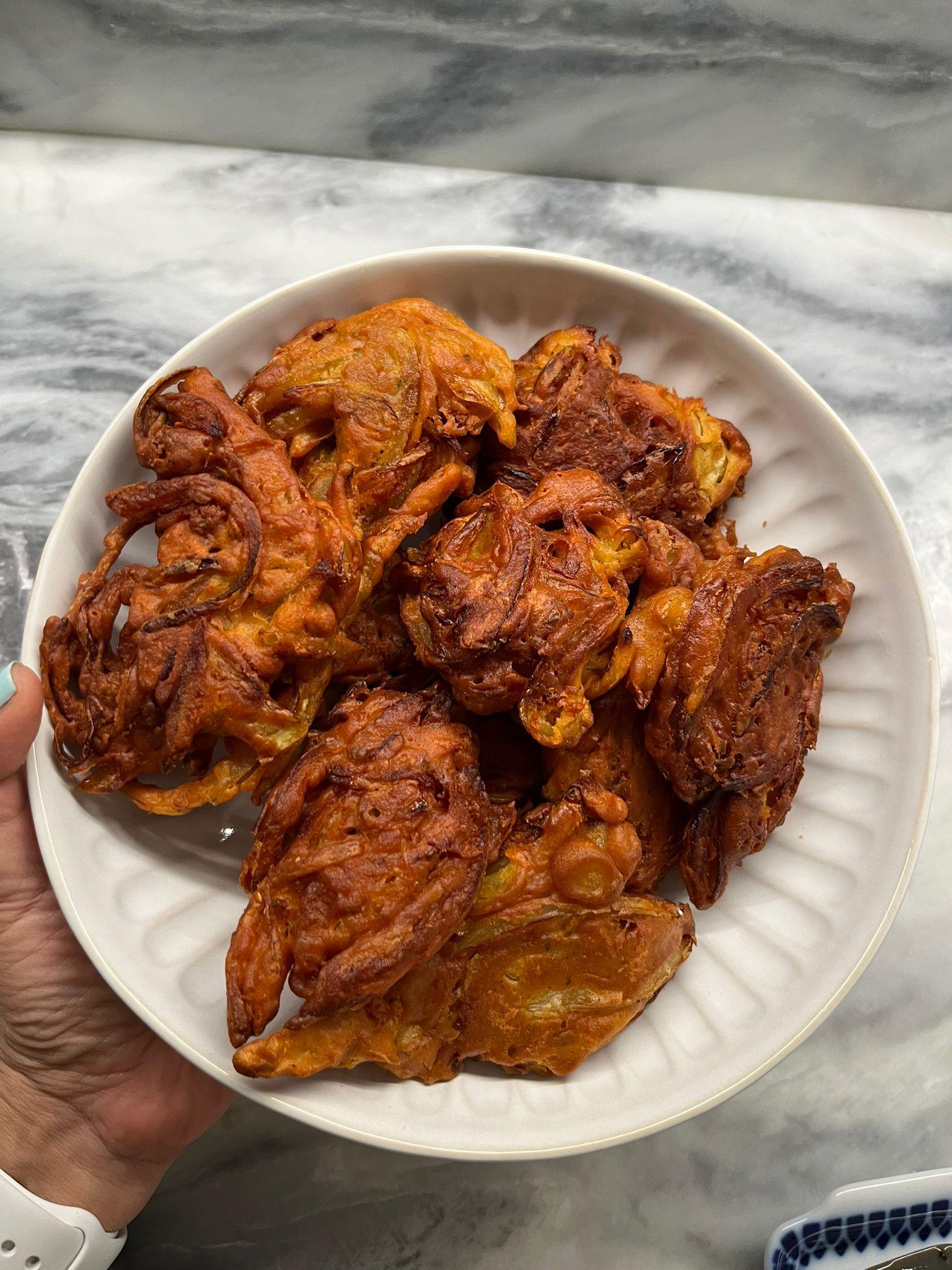I was born and raised in a traditional Jewish family in India. My father Dr. Samuel Solomon was a professor in the College of Agriculture, Pune where I spent the first 16 years of my life. On Simchat Torah morning, the gardener used to bring a basket of jasmine buds and roses as a gift. I would spend the morning making garlands of jasmine and roses for our living room doors and windows. By evening, our rooms were full of fragrance of the jasmine blossoms. I made a special thick Veni—traditional Indian garlands—of jasmine buds for my long braids.
Simchat Torah was one of my favorite holidays. I could wear new clothes with some of my mother’s jewelry. My mother would make Sat Padar (see gluten -ree recipe below) stuffed with fresh coconut and jaggery, which I would eat to my heart’s content.
We would go the Succath Shlomo synagogue early in the morning. It was a custom in our community to raise funds by auctioning off various honors related to the holiday and to collect the money after the holiday was over. My daddy would bid for honor of having my two brothers carry around the small Torah. This honor was always seen as particularly important and raised a premium for the community. As I watched my younger brothers carry that beautiful little Torah in red velvet case and silver crown, I envied them. I used to be in the women’s gallery with my mother and gave flying kisses to the Sefer Torah being carried around in a circle with song and dance. In general, my parents insisted that three of us should share everything. Why couldn’t I carry that Sefer Torah for a little while? I asked my mother and she simply said: “Girls are not allowed to carry the Torah.”
We moved to Bombay to live with my granddad Solomon Moses when I was 17 years old. While my maternal grandfather Dr. Elijah Moses was Orthodox, my paternal grandfather was Liberal. The Liberal prayers had a lot of English and women participated along with the men. Rabbi Hugo Gryn and Rabbi Naativ changed the sequence of prayers and celebrated Simchat Torah on Shemini Atzeret eve.
During the sixth and seventh circuits, women made a circle and the Torah was passed from one woman to another. I cannot describe how emotional I felt when I held the Torah for one minute in my arms. I kissed it, said a prayer for my family’s well being and embraced it tight. A shiver went through my spine and tears welled up in my eyes. I felt truly blessed to be so close to the holy Torah.
On Simchat Torah day, my mother did not go to work in her clinic. We would rise early to shower and to have our breakfast of gluten-free pancakes. My mother always bought a bright colored sari for me for Simchat Torah. She used to braid my hair and decorate it with a string of jasmine flowers or chrysanthemums. I was allowed to wear my mother’s jewelry.
After getting me decked up, mummy used to take me to my granddaddy’s room. “How does your granddaughter look today?” she would ask him. He would say: “Very nice. Put a black dot under her foot to ward off the evil eye.” She would follow his suggestion.
We would first go to Magen Hasidim Synagogue to see a couple of circuits of Sefer Torah and the dancing by young and old men, and to socialize with mummy’s relatives and friends. Some of them would glance at me and ask: “What does your daughter do?” Mummy would answer: “She is studying in college.” Then we would visit the Eli Kadoorie School where the celebration of Simchat Torah attracted big crowds. It was like a fair with stalls for different types of vegetarian and non-vegetarian food with soft drinks and ice cream. I remember eating biryani and samosas and drinking Roger’s raspberry drink. “Meet my son so and so, he is studying to be … or working for …,” I would hear from time to time. I had to follow mummy’s instructions: “Be nice. Don’t show an attitude. Your manners reflect on my upbringing.”
Soon I would be complaining to my younger brothers: “Tell mummy that we are tired. Let’s go home.” One of my younger brothers would take up my cause: “Mummy I am feeling tired. Tomorrow we have to go to college. Granddaddy must be waiting.” On the way back home, mummy would be muttering to herself: “Once a year Simchat Torah comes. We get an opportunity to meet people of our community. With this attitude you will either remain a spinster or you’ll get married to a non-Jew and break the Jewish line of past so many generations.” Well, neither of my mother’s fears came true. I married my second cousin and have continued the wonderful legacy of our religion and customs. I have passed on the baton to my children. I hope and pray they pass it on to their children too.
 Sat Padar: Gluten Free Coconut Pancakes
Sat Padar: Gluten Free Coconut Pancakes
This version of Noreen Daniel’s recipe is adapted for American style kitchens. It is naturally gluten free and delicately sweet.
Makes 8-10; Can be doubled.
For the pancakes:
Ingredients:
1 cup rice flour
1 cup water
1/4 coconut full fat coconut milk (or whole milk can be used if making for a milk meal)
3 eggs
Vegetable oil
Directions:
Mix ingredients until all the lumps are gone and the batter is smooth.
Heat, over medium heat, an 8 inch pan over medium non-stick heat and grease lightly.
Pour batter into the pan, it should be slightly thicker than a crepe.
Cook briefly until pancake is firm and easily removed from the pan.
Place the finished pancake on a plate and repeat until all the batter has been used.
For the Filling:
Ingredients:
1 cup sweetened coconut flakes
3/4 cup sliced blanched almonds soaked in hot water
2/3 cup raisins
2/3 cup dark brown sugar
½ tsp ground cardamom (or to taste)
Directions:
Mix ingredients except raisins together in a bowl.
Heat a 12 inch non-stick pan over medium heat.
Place filling in pan and gently stir until coconut is brown and fragrant and sugar is melted.
Remove and cool slightly.
Put half the mixture in food processor or mortar and pestle and pulverize until a paste.
Add raisins to chunky half.
Recombine to halves of filing until uniform in texture.
To Assemble
Place small amount filling in the middle of pancake.
Gently fold pancake in four.
Serve.







